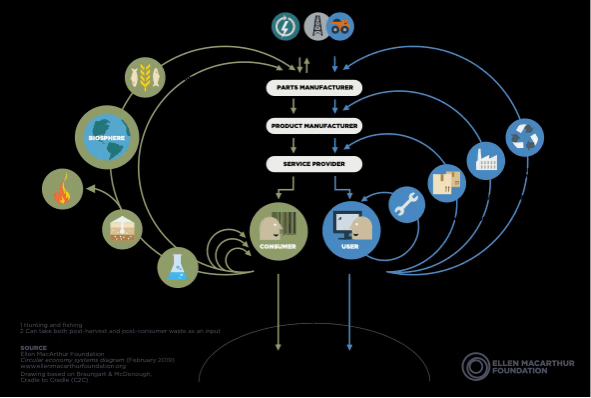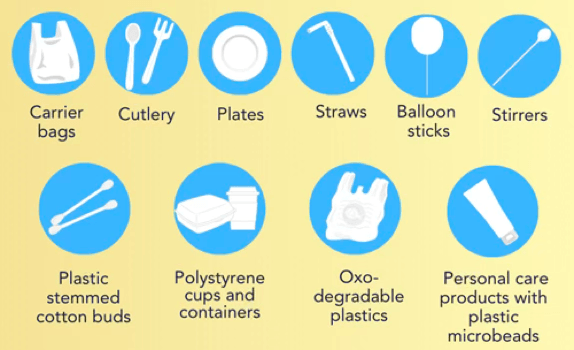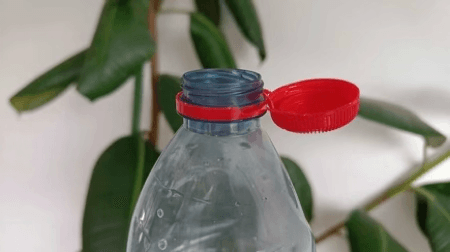Divergence in Policy Approaches
Eco-design and solid waste management have been focal points of environmental policy-making. The inappropriate sorting of plastics has created numerous environmental issues, threatening both oceanic and terrestrial pollution. Over the last decade, global organizations and international agencies have taken serious measures to mitigate the disruptions to the ocean environment, ecosystem, and human life caused by the lack of management of plastic waste. Countries have initiated systematic approaches, including the treatment of commercial and industrial plastics, efficient recycling processes, and material innovations that enhance the recoverability, durability, and degradability of plastic products.
Pioneering the model of “Circular Economy,” a new framework that integrates regenerative and restorative materials and maximizes the use of a product, the European Union established a unique approach to eliminate waste from production processes and enable the reusability of superior waste materials (U.S. Environmental Protection Agency, 2025).

Note. The collaborative loop system encompasses both the producers and consumers of plastic products, ensuring the secure and effective disposal of plastic waste.
Along with the European Union’s “Green New Deal”, the policy aims to make all packages recyclable by the end of 2030 and move towards climate neutrality by 2050, as set by the European Climate Law (European Council & Council of the European Union, 2025). As the world's largest plastic importer, China’s approach to plastic management has primarily taken the form of mandatory national plastic import restrictions and decentralized governmental regulation. In alignment with the Circular System model pioneered by the Western economies, this gigantic plastic economy is striving to address the infrastructural and implementational obstacles that hinder the development of the closed-loop system.

Note. (European Union) Only about 5.8% of plastics are mismanaged in Europe, with most being disposed through systematic regulations.

Note. (China) Almost 28% of plastic waste are mismanaged in China by 2019. As the world’s largest plastic generator, without appropriate management, such huge plastic volume will cause to terrible environment issues.
Strengthening the circular economy in the Chinese solid waste system is crucial to preventing the leakage of plastics into the natural environment. With more systematic regulation of businesses and consumers, mismanaged plastic waste can be reduced.
Production and Market
Single-used Plastics
The different approaches to single-use plastics that China and the European Union pursue reflect on market conditions, design requirements, and policy implementation. The European Union environmental directive aligns with the [ZM1] framework of Circular Economy to address single-use plastics, aiming to enhance the recoverability and recycling of plastic wastes to maximize natural resource usage while minimizing the release of waste materials.

Note. List of single-use plastics to be disposed of by the restrictive measures.
On the market side, the European Union has begun restricting the use of cotton bud sticks, cutlery, plates, straws, stirrers, and balloon sticks for commercial purposes in European Union member states. This ban will extend to cups, food and beverage containers made of expanded polystyrene, and all products made of Oxo-degradable plastic that are harder to recycle through recovery (European Commission, n.d.-a). China followed a similar path to the European Union regarding the commercial use of single-use plastics, implementing blanket bans on a nationwide scale, imposing a plastic ban, whereas the European Union has adopted gradual measures, including eco-design requirements and the installation of Circular Economy infrastructure. In 2020, China initiated a 5-year plan, aligned with the Solid Waste Law (Government of China, 2020), to reduce the flow of certain types of non-degradable single-use plastics, such as single-use plastic tableware and cutlery, with an interim goal of banning the sale of single-use plastic tableware for dining-in for both cities and counties by the end of 2022 (The State Council of the People’s Republic of China, 2021).

Note. Following the EU design requirement, caps are to be integrated into the bottle.
Enhanced Eco-design Requirement of the Circular Economy
The eco-design requirement complements single-use plastic regulations on commercial plastic product management. Integrating the bottle and cap is a unique design requirement, which helps make recycling more effective. The European Union Commission set goals to achieve at least 25% of recycled plastic in manufacturing for polyethylene terephthalate bottles by 2025 and 30% for all bottles by 2030 (European Commission, n.d.-a).
Early Government Response Attitude
The early responses to the reduction of plastic usage and content rules in the European Union were long-term goals and gradual implementation, taking effect on businesses. Earlier plans to combat single-use plastics have been extended into years, with a plan that aims to achieve a collection target of 90% by 2030, and an interim target of 77% by the end of 2025. Businesses involved in the sale of plastic materials are required to take measures to reduce the consumption of single-use plastic products, which have no alternatives (e.g., drinking cups), and monitor their consumption, reporting it to the European Commission Organizations.
While the European Union gradually implements the policy into commercial industries with multiple facets of requirements and harmonized compliance, China, on the other hand, imposes rapid restrictions on plastic usage, particularly on imports. Since the beginning of the 2010s, China has accounted for 57% of the global plastic recycling process. Many Chinese businesses remanufacture imported recycled plastic waste into new products, such as toys and apparel, thereby minimizing the generation of plastic waste, which is more expensive and complex to dispose of. Since late 2017, however, the Chinese government’s attitude towards the inflow of massive waste has changed radically. In January 2018, the Chinese government enforced the National Sword Policy, beginning to implement restrictive controls on import shipments and banning over 24 types of trash mixes, including non-recycled plastics. Since then, China’s plastic imports have decreased by over 90%, and mixed paper imports have fallen by more than 30% (Ministry of Ecology and Environment, 2018).
Circular Economy Analysis for China
Analysis of Current Situation

Note. The flow chart shows the systematic cycle of plastic management, from the producer to the consumer. China still lacks an integrated monitoring mechanism for packaging production.
The recycling and plastic waste management loop process is still in its early stages of development in China. The implementation of the Circular Economy in China is currently still in progress. Therefore, vertical integration is a systematic and fully monitored process, encompassing material selection, environmental design, reassembly, and the final recycling of plastic waste.
In 2021, the plastic recycling industry employed 0.9 million workers, with 80% of them being self-employed or working in small businesses. Polyethylene terephthalate recycling amounts reach a high of 4.8 million, but the majority (78%) is directed to the fiber industry, leaving close-loop recycling, or bottle-to-bottle, extremely limited. The current linear system still requires more dimensional governmental incorporations and monitors from more angles.
Outlook on Integration of Circular Economy
In 2021, China officially launched the National Circular Economy 14th “Five-Year” Plan to construct the complete chain of government policy on national plastic waste management and pollution, aiming to achieve the reduction of single-use plastic at source, improve plastic waste collection and recycling, establish the whole chain management system of plastic pollution, and reduce plastic waste leakage. Current policy is concentrated on downstream effort - waste management, including collection, sorting, and recycling, which is not enough to support plastic management and achieve broader plans alone. More direct infrastructural support and monitoring are needed in upstream development, from material selection in manufacturing to product design and distribution in commercial sectors, to unleash the full potential as China begins its route to closed-loop recycling.

Note. Down and upstream formation of circular economy
Targeted Areas of Perfection
Both policymakers and businesses should collaborate to enhance the upstream practicality using three approaches: design, incentivization, systems and infrastructure.
1. Design
To address the inflow of plastic packaging on the market, policymakers should develop reusable packaging target plans in accordance with the implementation plan and coordinate new design requirements. Businesses should shoulder the responsibility of monitoring the product development process and engaging in the innovation of eco-friendly packaging designs.
2. Incentivization
Policymakers should establish policy instruments, such as a landfill tax and an incineration fee, to encourage the reduction of waste. Businesses should allow customers to bring their own containers and take the initiative in implementing a deposit and return scheme to collect packages and promote reusability.
3. Systems and Infrastructure
To achieve a more integrated system, the government should strengthen shared infrastructure to scale up the recycling and reuse mode, as well as the waste management system that encompasses the informal sector. Businesses, in turn, should engage with the supply chain to standardize recyclable packages and delivery systems, while establishing reuse delivery and distribution channels (Ellen MacArthur Foundation, 2022). Can you reformat this section so that it is just a normal paragraph?
Shared Approach on Regulation - Extended Producer Responsibility
A similar approach taken by both in controlling business plastic is the Extended Producer Responsibility, as amended to the Waste Framework Directive. The “polluter pays principle” dictates that the producer must cover the environmental costs (CMS Law, n.d.). The Plastic and Packaging Waste Directive sets minimum requirements for the Extended Producer Responsibility schemes for all members of the European Union by 2024. Under this new scheme, industry companies are liable for any waste collection and litter generated; for instance, producers of tobacco products are expected to pay a fee to raise awareness about the use of filters, cups, packets, and food containers (European Commission, 2019). In 2008, China initiated awareness of producer responsibility through the enactment of the Circular Economy Promotion Law. In 2016, China strengthened the Extended Producer Responsibility Implementation plan, enhancing a green circulation and low-carbon business cycle (RKCM,n.d.).
Evaluation Mechanism of Policy
The Chinese central government sets the administrative policy, while the specific implementation of plastic waste management is treated under the regional commission with a targeted plan. In response to plastic pollution prevention, the Chinese central government coordinates and supervises 10 government agencies, each assigned to different tasks. At the local level, each regional commission is responsible for its own plastic pollution coordination. Through cooperation with local departments, the commission set a targeted action plan for pollution control for the local region. The Ministry of Ecology and Environment allocates resources with the local bureau for cleaning up plastic packages in local landscapes and restoration work. For local environmental law enforcement, the ecology bureau organizes on-site inspections of enterprises and market supervision (SBMGUP, n.d.).
Compared to China, where local commissions focus specifically on the environmental characteristics of each region, European Union members collaborate through a unified department to address different aspects of environmental policy for all member states and provide equal access. European Union member states are obligated to implement the EU’s environmental policy fully. When policies are not implemented correctly, the Commission will step in and offer guidance on implementation. This involves a mutual communication, in the form of an informative debate, between government and administrative parties, as well as other stakeholders, to find solutions to address the issues identified in the Environmental Implementation Review (EIR) report. Following the conversation, EIR will offer targeted reports to each member state, highlighting the implementation shortcomings and outlining priority actions to address environmental issues. (European Commission, n.d.-b).
Conclusion
The approaches to plastic management taken by the European Union and China differed from a single-use plastic enforcement style to market restrictions to policy measures. The various levels of infrastructural coverage, economic development, and environmental education can affect the progress of plastic waste management to different extents. While witnessing the progress of the Circular Economy in some countries, limitations and challenges based on the geopolitical, socio-economical, and environmental conditions are still roadblocks yet to overcome: high initial investments on infrastructure and channel distribution nationwide create significant financial burden, let alone for the majority of less economically developed areas; fragmented government legislations cause inconsistency of environmental and social policy implementation; and lack of scalability due to inconsistent recoverability of plastic products inhibited the integration of supply chain. Despite uncertainties and obstacles, the unique characteristics of policy approaches to plastic management examined in this research provide policymakers with concrete guidelines on aspects of policy implementation. Here comes the time for international agencies to step in and share the responsibility to coordinate the implementation of environmental policy across the world and integrate systematic methodologies, promoting recoverability and reusability to the maximum extent.
References
Biosphere Isle of Man. (2023, July 13). “Single-use plastic ban nears”. Biosphere. Retrieved from https://www.biosphere.im/news/single-use-plastic-ban-nears
CMS Law. (n.d.). Plastics and packaging laws: European Union overview. Retrieved September 18, 2025, from https://cms.law/en/int/expert-guides/plastics-and-packaging-laws/european-union
Ellen MacArthur Foundation. (2021). The Butterfly Diagram: Visualizing the Circular Economy. Retrieved from https://www.ellenmacarthurfoundation.org/circular-economy-diagram
Ellen MacArthur Foundation. (2022). Towards a circular economy for plastics in China. Retrieved from https://content.ellenmacarthurfoundation.org/m/7a9d9fcb6006ad58/original/Towards-a-circular-economy-for-plastics-in-China.pdf
European Commission. (2019). Directive (EU) 2019/904 of the European Parliament and of the Council of 5 June 2019 on the reduction of the impact of certain plastic products on the environment. Official Journal of the European Union. https://eur-lex.europa.eu/legal-content/EN/LSU/uri=CELEX:32019L0904
European Commission. (n.d.-a). Single-use plastics. Retrieved September 18, 2025, from https://environment.ec.europa.eu/topics/plastics/single-use-plastics_en
European Commission. (n.d.-b). Environmental Implementation Review. Retrieved September 18, 2025, from https://environment.ec.europa.eu/law-and-governance/environmental-implementation-review_en#environmental-infringements-map-and-dashboard
European Council & Council of the European Union. (2025, February 21). European Green Deal. Retrieved from https://www.consilium.europa.eu/en/policies/european-green-deal/
Euronews Green. (2024, July 2). Why are bottle caps attached to the bottle? Inside the EU directive causing drink spills. Retrieved from https://www.euronews.com/green/2024/07/02/why-are-bottle-caps-attached-to-the-bottle-inside-the-eu-directive-causing-drink-spills-ev
Government of China. (2020, January 19). Solid Waste Law: Ministry of Ecology and Environment announcement. State Council of the People’s Republic of China. Retrieved from https://english.www.gov.cn/statecouncil/ministries/202109/15/content_WS6141f622c6d0df57f98e03a1.html
Government of the Isle of Man. Plastic-Free Isle – Single-use Plastics Items Illustration (graphic). Retrieved from https://www.gov.im/plastics
Ministry of Ecology and Environment of the People’s Republic of China. (2018). National Sword Policy: Implementation details on restricting waste imports. Retrieved from https://ejournal.uum.edu.my/index.php/jtom/article/view/15415/3659
Our World in Data. (n.d.). Annual plastic waste by disposal method. Global Change Data Lab. Retrieved from https://ourworldindata.org/grapher/plastic-fate?country=~OWID_EUR&tableFilter=selection
RKCM-PD ERIA. (n.d.). Extended Producer Responsibility in China. Retrieved September 18, 2025, from https://rkcmpd-eria.org/extended-producer-responsibility-detail/china
SBMGUP. (n.d.). Managing plastic waste in the People’s Republic of China. Retrieved September 18, 2025, from https://sbmgup.in/Content/GO_Guidelines_PWMPresentation/PWMPresentation/managing-plastic-waste-prc.pdf

